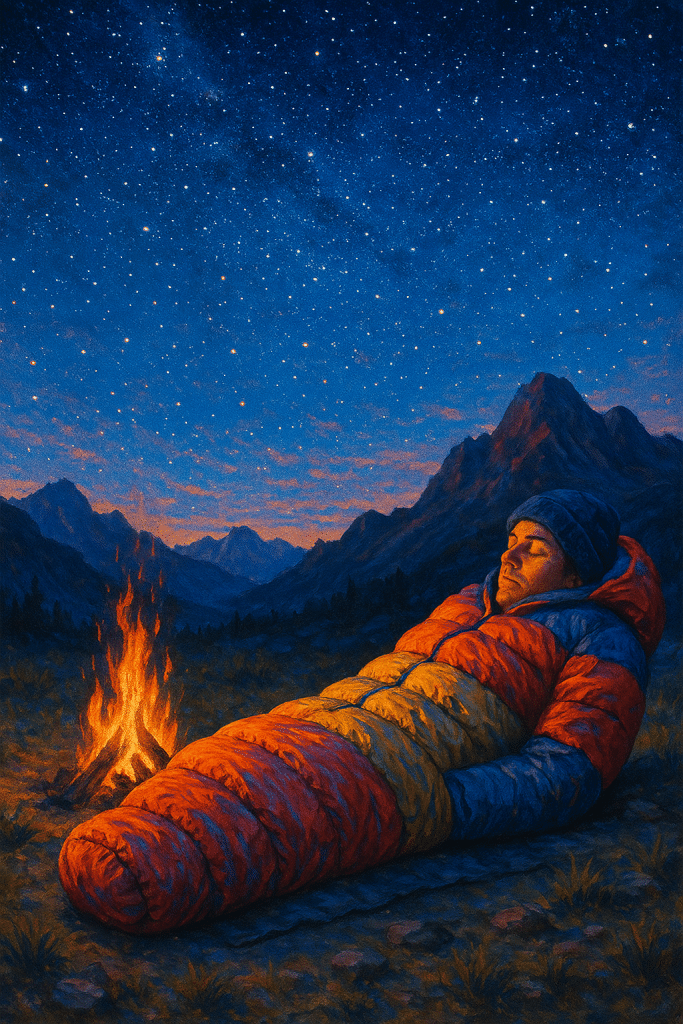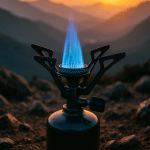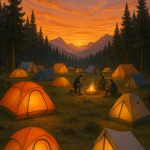Introduction to Choosing the Right Sleeping Bag for Outdoor Enthusiasts
If you’re anything like me, hitting the trail or pitching a tent under twinkling stars is a chance to unplug and sink into nature’s embrace. But here’s the rub—no matter how epic the views, a lousy night’s sleep can wreak havoc on your adventure spirit. That’s precisely why investing in the best sleeping bags is a game-changer for every outdoor enthusiast. These bags aren’t just sacks of insulation; they’re compact, technical sleep systems engineered for warmth, weight, and durability.
In this comprehensive guide, I’ll walk you through everything you need to know—from key types and insulation materials to temperature ratings and specialized designs—so you can confidently choose the best sleeping bags tailored for your adventures. Whether backpacking through chilly woods, car camping by the lake, or cozying up with the kids on a weekend trip, this article dives deep into trusted gear like Feathered Friends Swallow UL 20, Marmot Trestles 15, and more, helping you rest easy no matter where your journey takes you.
Understanding Sleeping Bag Types and Shapes for Different Adventures
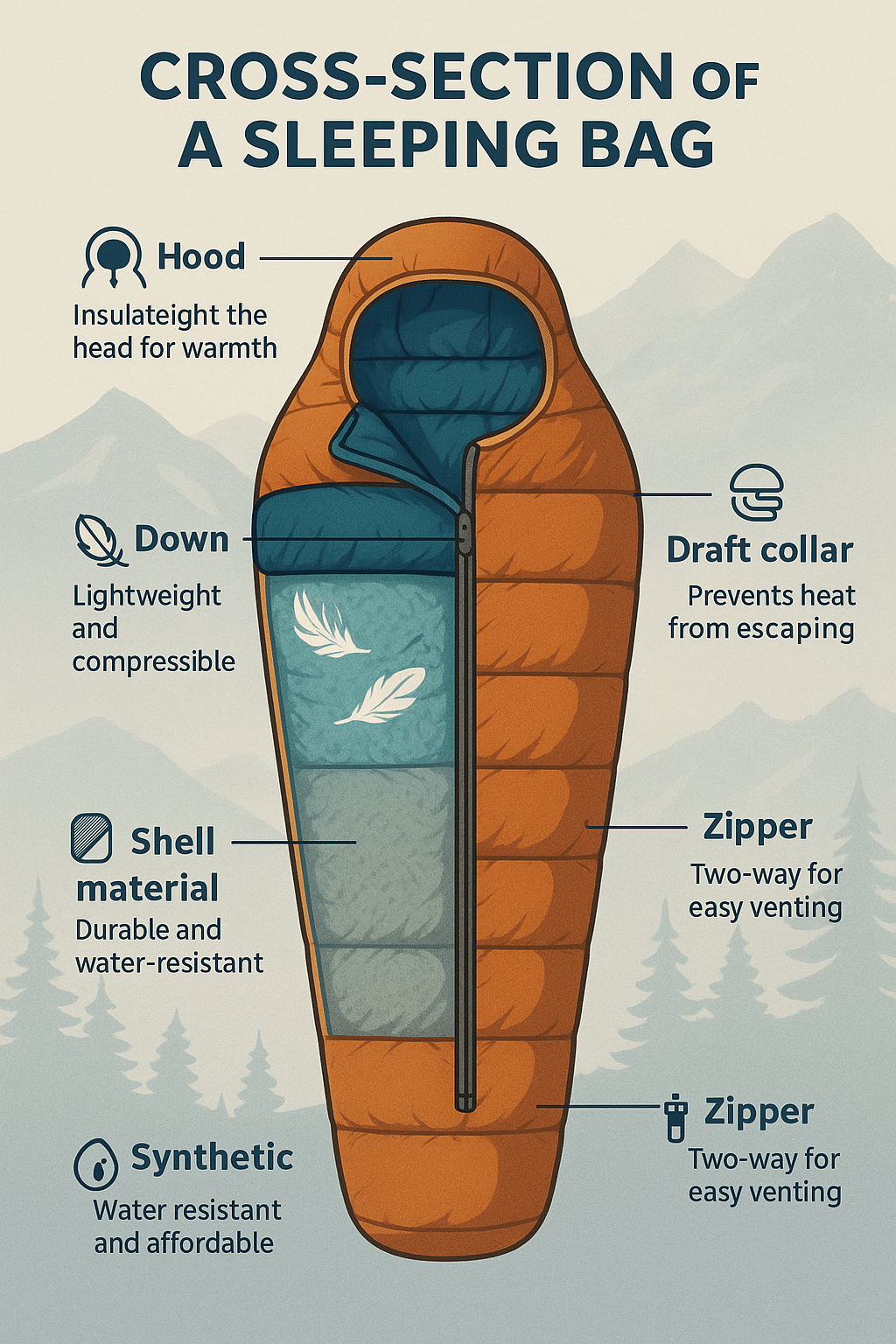
Choosing a sleeping bag involves more than just picking a pretty color or flashy brand; the shape and style dramatically influence comfort, warmth, and packability. Let’s zero in on the most popular shapes and formats to see what fits your adventure style.
Mummy vs Rectangular vs Semi-Rectangular: Pros and Cons
-
Mummy Bags:
These are the go-to for most seasoned hikers and backpackers. The mummy shape tapers from shoulders to feet, minimizing dead air space and maximizing heat retention—perfect for colder weather. The snug hood further seals warmth around your head. However, this shape can feel restrictive for those who toss and turn or prefer more legroom. -
Rectangular Bags:
If comfort and space are your jam, rectangular bags provide plenty of room to stretch out. They’re fantastic for car camping or casual outdoor nights with the family. The downside? They sacrifice some warmth and pack size efficiency, making them less ideal for weight-conscious backpackers or chilly climates. -
Semi-Rectangular Bags:
Consider them a hybrid option striking balance—roomier than mummy bags but more thermally efficient than rectangular ones. They cater well to “side sleepers” who need extra wiggle room while maintaining a better warmth-to-weight ratio.
Sleeping Bags vs Quilts: Which is Best for Your Trip?
A newer trend gaining traction in the backpacking world is the use of sleeping quilts. Unlike traditional bags seamed on all sides, quilts are open along the back, allowing them to hug a sleeping pad tightly and shed weight.
-
Sleeping Bags:
Offer full enclosure, providing consistent insulation from all sides. Great for cold or windy setups. -
Quilts:
Lightweight, versatile, and perfect for warmer climates. They often convert between quilts and bags via adjustable footboxes—see REI Co-op Magma Trail Quilt for a seamless example. They require a quality sleeping pad for insulation underneath, so they’re best suited for confident ultralight backpackers.
Insulation Matters: Down, Synthetic, and Hybrid Fill Explained
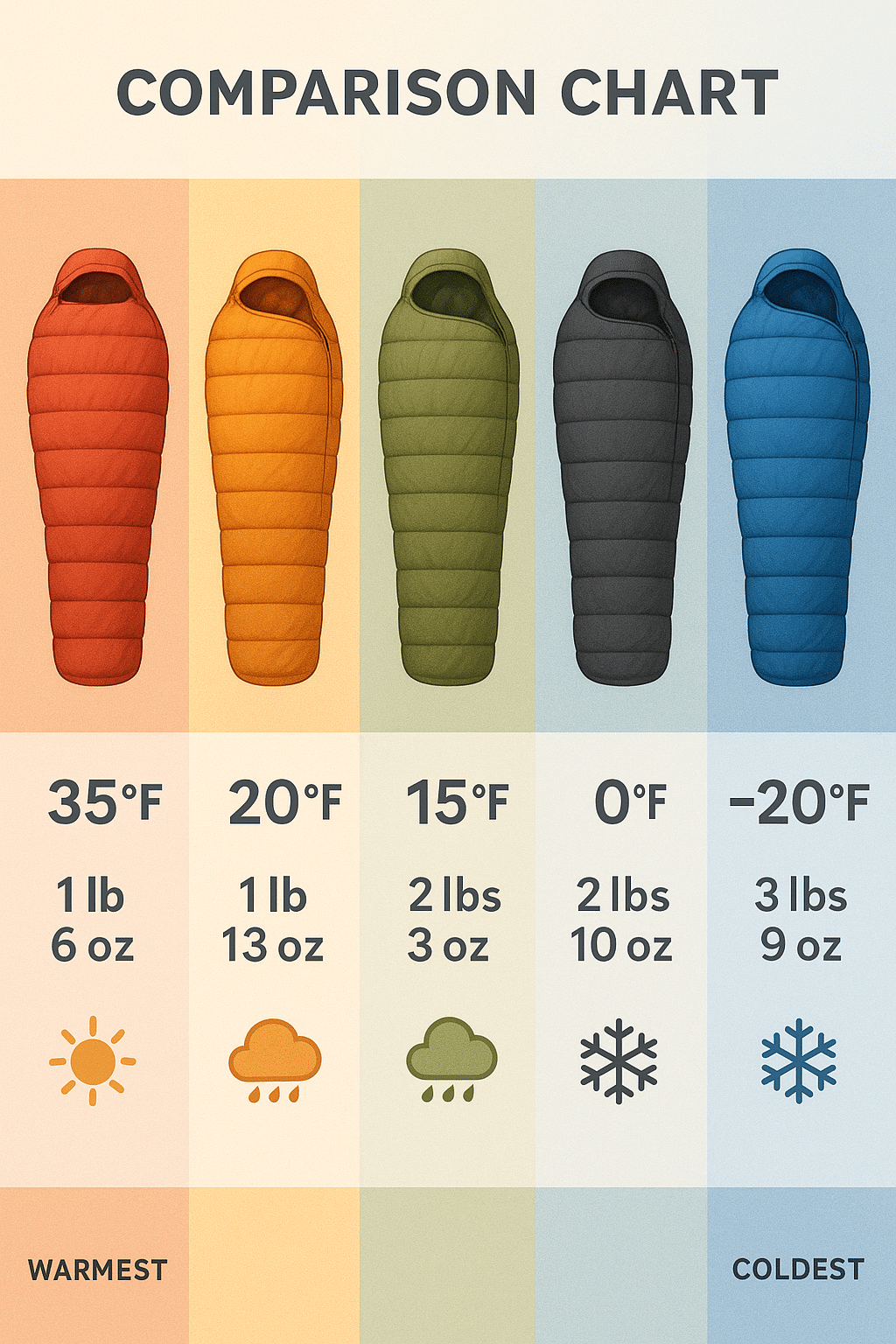
When your survival and comfort depend on staying warm overnight, understanding insulation types is vital. Here’s the lowdown on down, synthetic, and hybrids:
Benefits of Down Insulation: The Feathered Friends Swallow UL 20 Case Study
Down insulation, harvested from ducks or geese (like the Feathered Friends Swallow UL 20), remains the gold standard for lightweight warmth. With a fill power rating of 950+, this bag packs superior loft and insulation per ounce.
Why choose down?
– Incredible warmth-to-weight ratio
– Compressible to tiny pack size
– Durable if properly cared for
The Feathered Friends Swallow UL 20 exemplifies this, weighing only 1 lb 11 oz, making it an ultralight champion for three-season camping. Its Pertex® Endurance® UL shell fabric adds water resistance without bulk, mitigating some moisture risks inherent to down.
Real-life insight: I’ve used this bag over chilly mountain nights and appreciated the highly contoured 3D hood and draft tube collar that seal in heat perfectly. However, keep in mind down needs dry storage and occasional reproofing to maintain loft.
Synthetic Fill Advantages Illustrated by the Marmot Trestles 15
Synthetic insulation, like SpiraFil® in the Marmot Trestles 15°, shines where moisture is a concern. Unlike down, synthetic fibers keep loft even when damp and dry faster, making these bags ideal for wet climates or novice campers who may expose gear to elements.
Pros:
– Retains warmth when wet
– Hypoallergenic and easier to maintain
– Generally more affordable
Marmot’s Trestles 15° combines synthetic insulation with smart construction techniques like a 3D footbox and fold-down second zipper for ventilation. At approximately 3 lbs 6 oz, it’s slightly heavier but dependable for colder nights and damp environments.
Temperature Ratings and Comfort Zones: Picking Bags for Your Climate
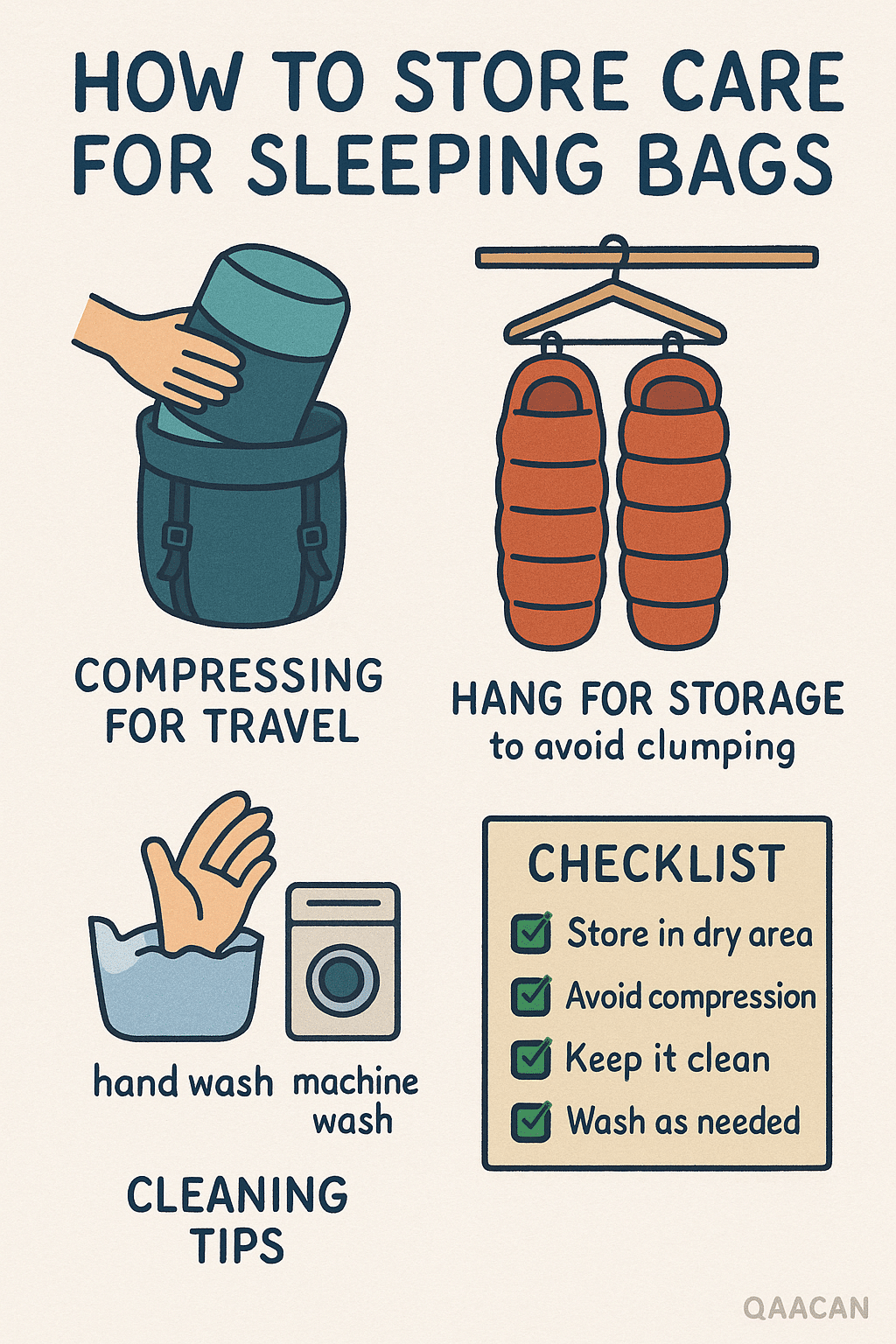
Temperature ratings can be confusing, but knowing how to interpret them ensures you don’t wake shivering or baking.
- Comfort rating: The temperature at which the average sleeper can expect a comfortable night.
- Lower limit rating: The coldest temperature at which the bag will keep the average cold-tolerant person warm.
For cold weather camping, look for bags rated between 15°F and 20°F, such as Western Mountaineering UltraLite or Therm-a-Rest Saros 20F/-6C Sleeping Bag. Keep safety buffers depending on your tolerance and typical conditions.
Lightweight and Packable: Best Options for Backpacking and Hiking
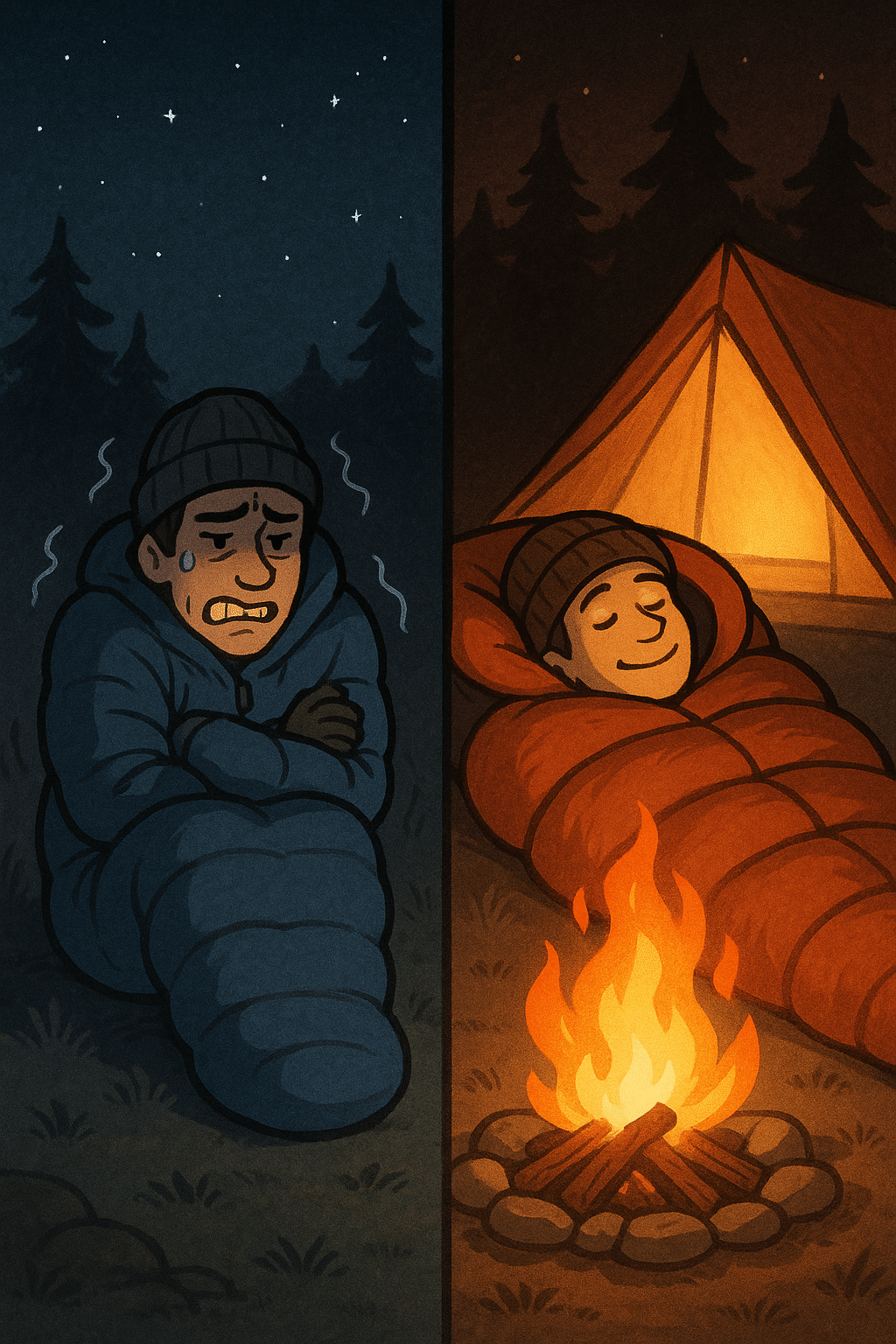
When miles count and pack weight weighs on your mind, ultralight bags offer unparalleled freedom.
Western Mountaineering UltraLite: A Benchmark in Warmth-to-Weight Ratio
The UltraLite strikes a brilliant balance: 1 lb 13 oz filled with 850+ fill down, and a compact 7” x 13” packed size. Its 12-denier ripstop nylon shell maintains durability without weight penalty, perfect for long treks through changing weather.
REI Co-op Magma Trail Quilt: Versatility in Ultralight Sleep Systems
For those who want to shed ounces while retaining options, the Magma Trail Quilt is a marvel. Its 30°F rating makes it suitable for lighter three-season trips, and versatile design can function as a bag or quilt. Plus, pad cords anchor it perfectly, so you stay cozy all night.
Durable and Waterproof Features for Wet Weather Adventures
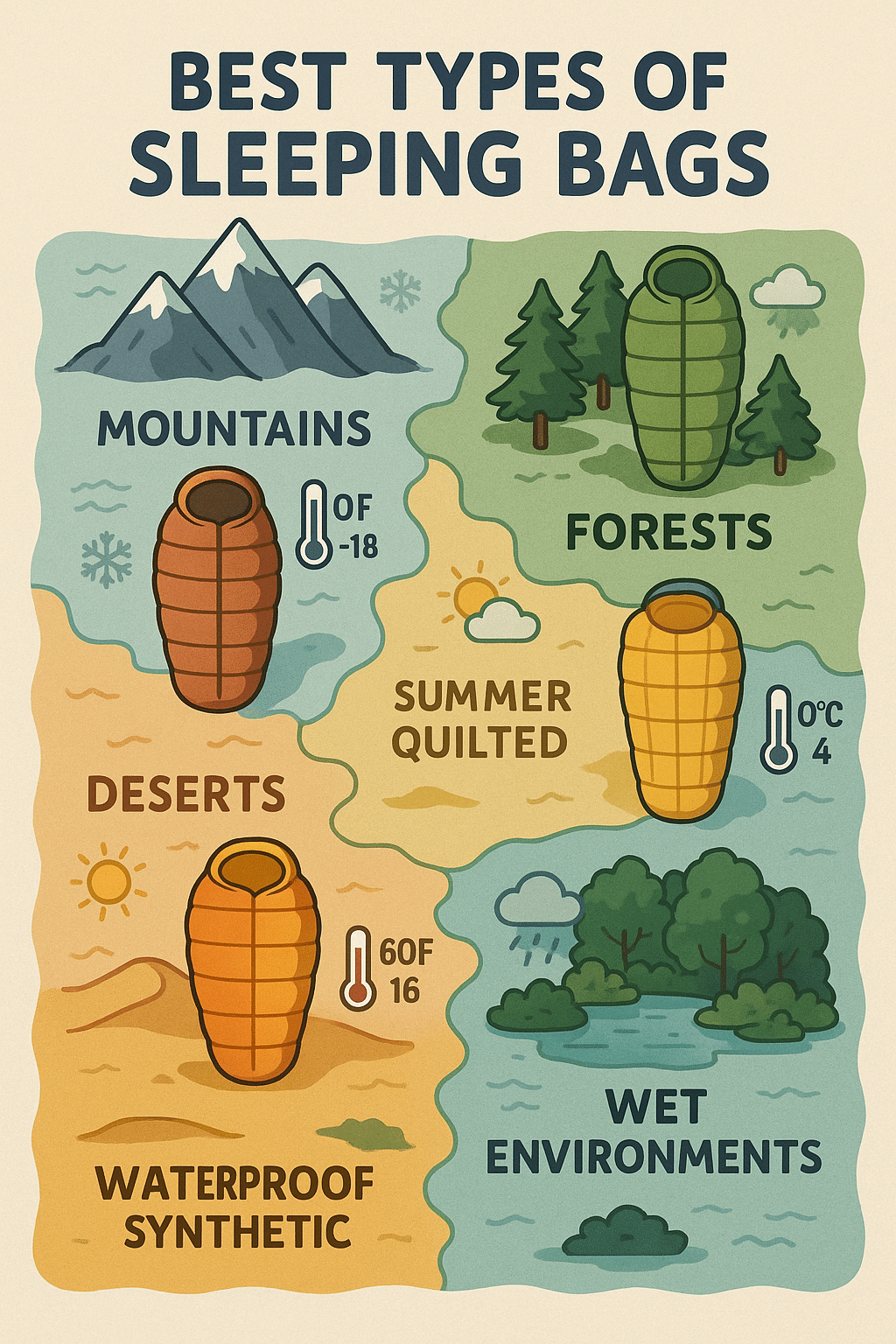
Rain and dew are inevitable; your sleeping bag’s outer shell and water-resistant qualities are often overlooked but critical.
Evaluating Shell Fabrics and Water Resistance in The North Face Cat’s Meow
The North Face Cat’s Meow uses a DWR (durable water repellent) finish on its synthetic fill bag to shed moisture and dry quickly. The integrated shock cords secure the bag to a sleeping pad, preventing shifting and reducing cold spots. Available in multiple lengths, it suits tall campers and includes a well-insulated hood with cinch collar to block drafts.
For damp environments or unpredictable weather, synthetic fill with water-resistant shells and secure insulation can make all the difference.
Specialized Sleeping Bags for Side Sleepers, Kids, and Families
Not all sleepers are built alike. Here’s how you can address unique needs.
Big Agnes Lost Dog 15: Comfort and Space for Side Sleepers and Versatile Use
This rectangular-shaped bag features FireLine ECO synthetic insulation for warmth and eco-conscious campers. Its signature Flex Pad Sleeve cleverly holds your sleeping pad to prevent rolling—key for side sleepers who tend to twist during sleep.
Available in Regular, Long, and Wide Long sizes, the Lost Dog 15 delivers generous room without sacrificing warmth. Its nylon ripstop shell also features a water-repellent finish, combining durability with comfort.
Best Sleeping Bags for Kids: Ensuring Safety and Warmth Outdoors
When camping with kids, consider bags designed with appropriate length and insulation to maintain warmth without excess weight. Many brands offer smaller versions of their adult bags for this purpose, but always prioritize good insulation and reliable zipper designs to prevent nighttime struggles.
Integration with Outdoor Gear: Sleep Pads, Quilts, and Accessories
A sleeping bag alone isn’t the whole sleep solution—accessories and integrations can elevate your comfort.
SynergyLink™ Connectors in the Therm-a-Rest Saros 20F/-6C: Enhancing Sleep Systems
Therm-a-Rest’s innovative SynergyLink™ connectors allow you to attach your sleeping bag directly to compatible sleeping pads, preventing gaps that lead to heat loss. Coupled with a foot warmer pocket and insulating draft collar, these details amplify warmth and reduce shivers.
Pairing your sleeping bag with a quality pad and optional liner can drastically improve your rest and energy levels for outdoor adventures.
Maintenance and Lifespan: Care Tips to Extend Your Sleeping Bag’s Performance
No matter how rugged the bag, it needs TLC to keep performing at its best:
- Cleaning: Use mild soap and a front-load washing machine or professional services. Avoid fabric softeners or bleach which damage insulation.
- Storage: Store loosely in a dry, breathable sack rather than tight compression to maintain loft.
- Repairs: Promptly patch tears or broken zippers. Many brands offer repair services.
Proper maintenance ensures your investment lasts many seasons, continually delivering comfort and warmth.
Unique Insights: The Role of User Fit and Customization in Sleeping Bag Performance
A perfect fit isn’t just cozy, it’s functional. Adjusting hoods, cuffs, and draft collars customizes heat retention to your unique shape and sleeping style.
A bag too big traps excessive cold air, wasting insulation. Too small, and you’re cramped. Features like 3D contoured hoods (Feathered Friends Swallow UL 20) and adjustable collars tune your bag to lock in body heat.
Conclusion: Matching Your Adventure Needs with the Best Sleeping Bags
Finding the best sleeping bags isn’t just a shopping task—it’s about tailoring your gear to your adventure’s demands and personal comfort. From ultralight down marvels like the Feathered Friends Swallow UL 20, to versatile synthetic stalwarts like the Marmot Trestles 15, there’s a perfect sleep system for every outdoors enthusiast. Don’t forget to blend in practical factors like shape, insulation material, temperature ratings, and integration with pads or quilts.
By investing thoughtfully in your sleeping bag, you’re guaranteeing that every dawn you rise refreshed and ready to take on the trail, the mountain, or the campground. So, pack smart, sleep warm, and let your next great adventure unfold with the comfort it deserves.
FAQs about Best Sleeping Bags
Q1: What is the best sleeping bag for backpacking?
A1: Look for ultralight, compressible bags like the Feathered Friends Swallow UL 20 or Western Mountaineering UltraLite. These use high-fill-power down and lightweight shells for warmth-to-weight efficiency, ideal for long treks.
Q2: Which sleeping bags are best for cold weather camping?
A2: Bags rated 15°F to 20°F such as the Marmot Trestles 15 or Big Agnes Lost Dog 15 provide reliable warmth and synthetic or hybrid insulation to handle chilly, damp conditions.
Q3: How do synthetic and down sleeping bags compare?
A3: Down offers superior warmth-to-weight and compressibility but struggles when wet. Synthetic insulation is heavier but excels in wet environments and requires less maintenance.
Q4: Can quilts replace traditional sleeping bags?
A4: Quilts like REI Co-op Magma Trail Quilt offer ultralight flexibility and work great in warm to mild climates. However, they require a good sleeping pad and may not suit cold, windy camping.
Q5: What features should side sleepers look for in sleeping bags?
A5: Semi-rectangular or rectangular bags with more room, like the Big Agnes Lost Dog 15 with its Flex Pad Sleeve, enhance comfort by preventing restrictions and maintaining thermal efficiency during tossing and turning.
Quick Takeaways / Key Points
- Shape matters: Mummy, rectangular, and semi-rectangular bags offer different balance of warmth and freedom.
- Insulation choice: Down excels in weight and warmth; synthetic fills shine in damp conditions.
- Temperature ratings: Choose bags rated below your expected nightly low for safety and comfort.
- Ultralight options: Feathered Friends Swallow UL 20 and Western Mountaineering UltraLite lead ultralight performance.
- Water resistance: Shell materials with DWR coating enhance weather protection, as in The North Face Cat’s Meow.
- Specialty bags: Side sleepers and families benefit from designs offering extra space and pad attachment features.
- Maintenance: Proper cleaning, storage, and repairs extend sleeping bag life and effectiveness.
Embark on your next outdoor adventure confidently with a sleeping bag that truly fits your needs. Explore the full product range, expert reviews, and tips mentioned here to find your perfect sleep companion. Don’t forget to follow up with reputable retailers’ websites for current pricing and availability!

